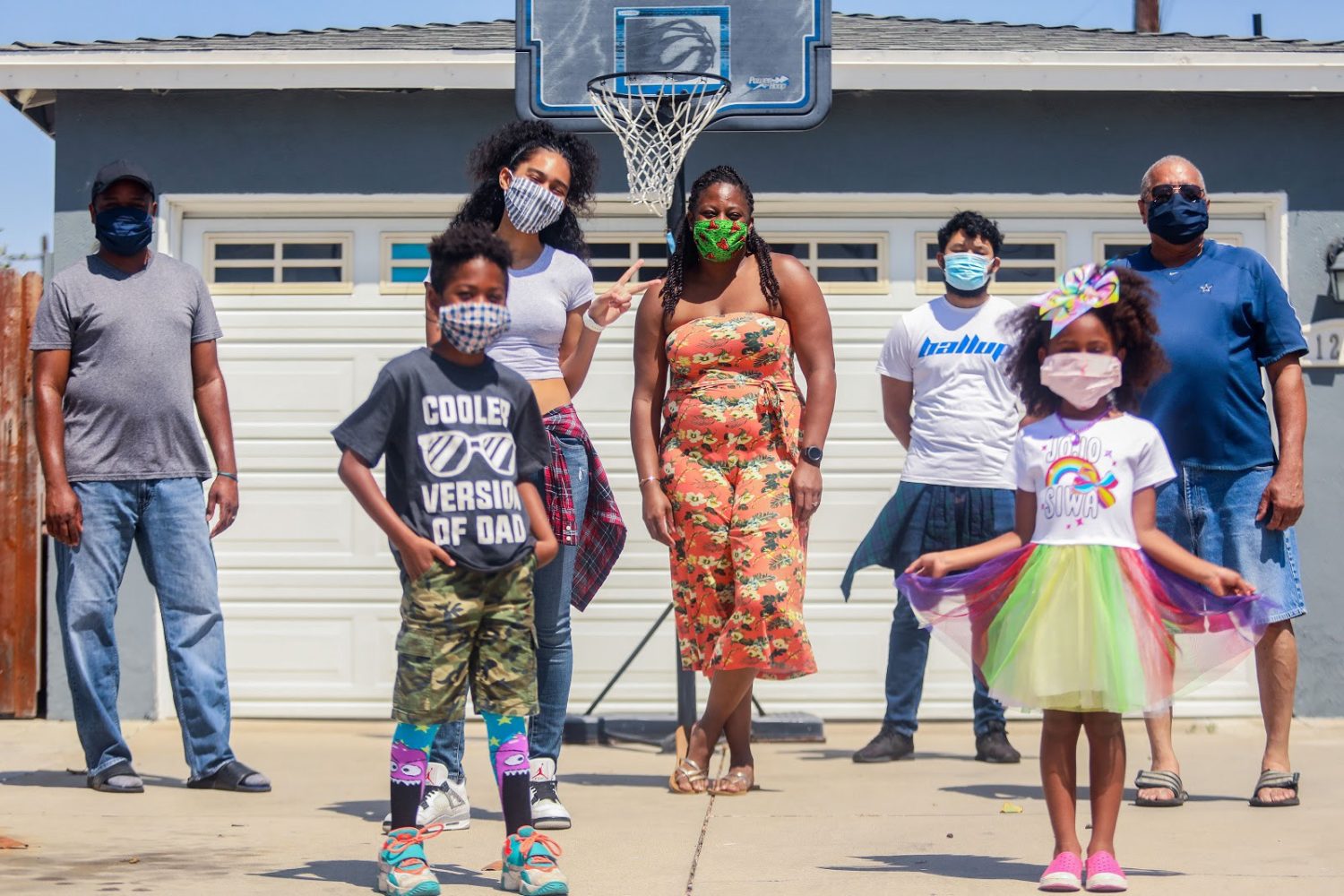Last fall, KPCC/LAist distributed point-and-shoot film cameras to a dozen parents across Southern California. We wanted to know what’s most important to parents — and to see it through their eyes.
We had no idea how the world would change.
What we originally conceived of as an in-person photo gallery and a series of events became a digital chronicle of parenting during a pandemic. In the process, we learned how to be nimble and pivot, deepen and strengthen our relationships with parents, and how to better support community members telling their own stories.
Parenting is messy, chaotic, imperfect, and beautiful — that’s what we hoped to capture through “Parenting, Unfiltered,” and it’s what the final project reveals, despite the twists and turns 2020 has thrown parents’ way.
The result is a #nofilter, real take on parenting, not to mention the relationships our newsroom has now formed with a cohort of parents throughout the region. What follows is a breakdown of how we approached this project through each of its phases and what we learned.
Why this approach?
Newsrooms have historically failed to effectively and responsibly center the voices of traditionally marginalized communities, especially those of people who are Black, Indigenous, of Color, LGBTQ+, or live with disabilities. So, when I began my new role as engagement producer for KPCC/LAist’s early childhood coverage, I saw an opportunity to leverage our storytelling and convening superpowers, as well as our reach, to make up some of that ground.
A conversation with Romondo Locke, who works with the Los Angeles Public Library, sparked the idea to tell early childhood stories through photos.
We decided to invite parents to join an open-ended creative project, and by doing so, we hoped to tackle several overlapping goals:
- Learn more about the challenges and priorities in the world of early childhood.
- Strengthen our relationships with parents, caregivers, and educators, placing an emphasis on racial, socioeconomic, and geographic diversity.
- Use our megaphone to curate and present informative content that would spark dialogue about early childhood.
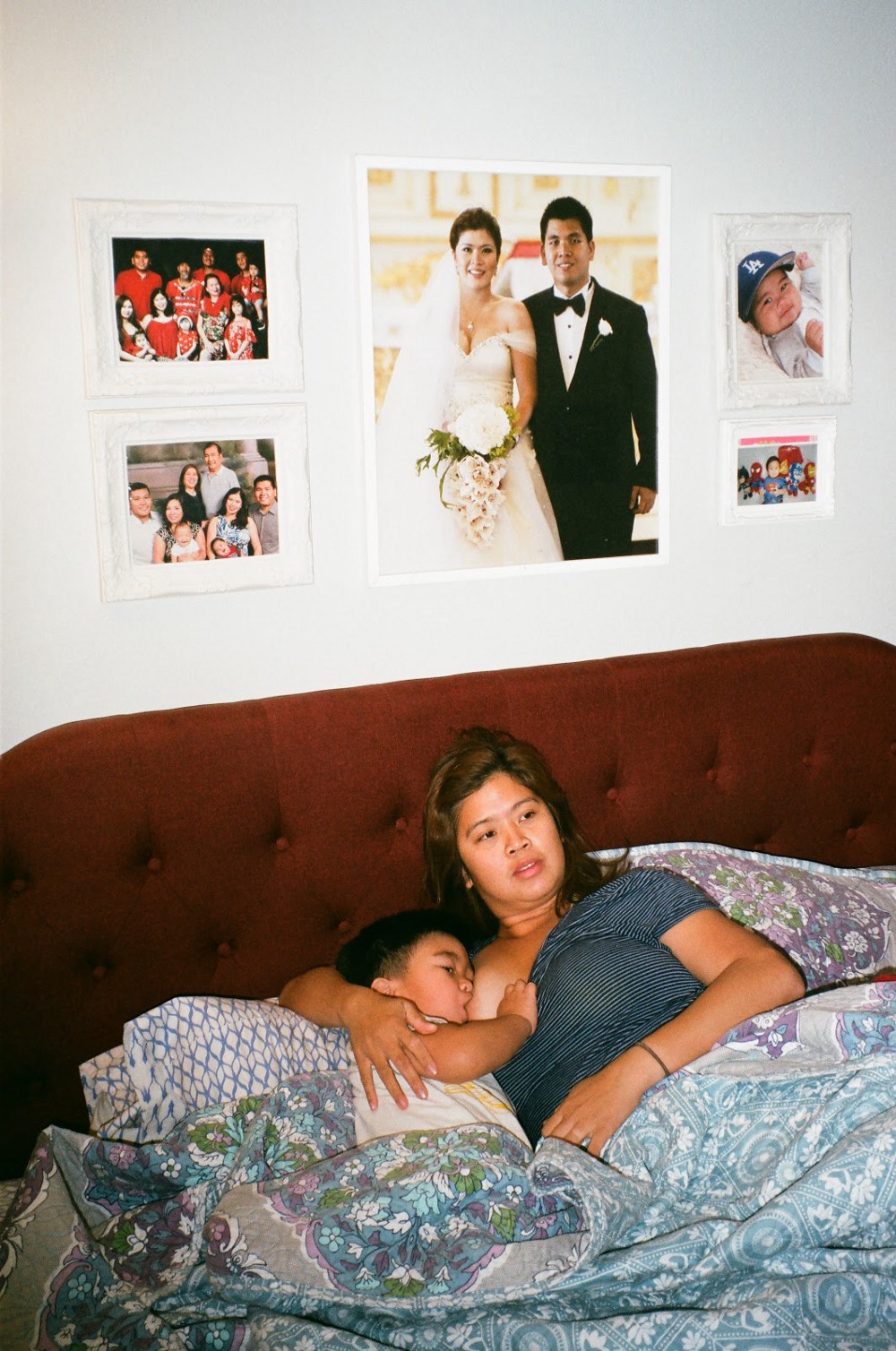
Parenting is messy, chaotic, imperfect, and beautiful. And that’s what we hoped to capture through KPCC’s Parenting, Unfiltered project. (Courtesy of Franilyn Dacono)
Assembling a team
From the outset, it was clear that executing this type of project would require collaboration across the newsroom. The first step was to assemble a team.
I was the point person on the project and collaborated closely with early childhood reporter Mariana Dale, who spearheaded the news and broadcast elements. Chava Sanchez, KPCC/LAist’s visual journalist, selected camera equipment, trained parents, curated the gallery, and edited the images together with audio to create the final video.
Consultant Jenny Lin, who has a background in photography, gallery curation, and UX design, worked with us through the process of curating and designing the digital gallery. Data editor Dana Amihere built the site. And throughout the way, engagement team members jumped in to produce, audio edit, and build needed online tools (Caitlin Biljan, Giuliana Mayo, Nubia Perez, Sarah Pineda, and Dani Rosales). Director of community engagement Ashley Alvarado and education editor Tony Marcano oversaw the project.
By necessity, we had to collaborate and stay in regular communication across the newsroom. As a side effect, it strengthened our relationships with each other. It turned out that this strong foundation helped the project once we had to switch gears.
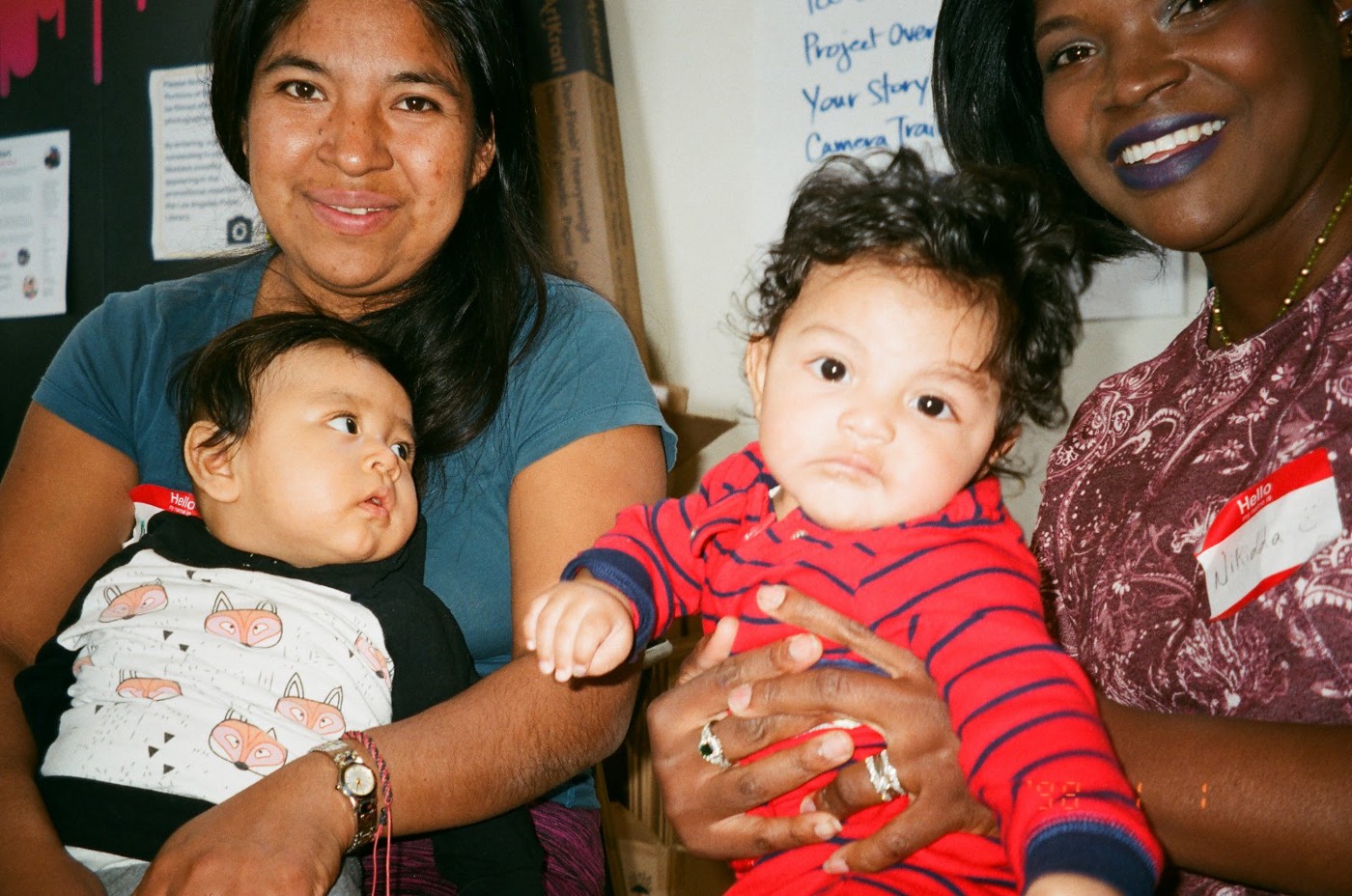
Photo project parents Noemí Cruz and Nikidda Thomas-Carrillo, with their babies, just months apart in age, at the first orientation meeting in fall 2019. (Courtesy of Nikidda Thomas-Carrillo)
Finding parents
Since we wanted to center diverse voices in the project, we decided to focus our outreach entirely outside of KPCC/LAist’s traditional networks, which, though more diverse than the national public radio audience, still tend to be whiter and higher income than Southern California overall.
Early childhood organizations already have trusted relationships in many of the communities we wanted to reach. Child care resource and referral agencies like Crystal Stairs run Early Head Start and Head Start sites and also send payment to childcare providers. Worker centers like IDEPSCA regularly meet with parents to provide legal services and inform them about their rights. We started our engagement by connecting with these organizations.
The targeted outreach paid off. Because parents already knew and trusted these organizations, they were more open to talking to us. Some joined the project because they were interested in photography and looking for a creative outlet. Some joined because they wanted a platform to tell their stories.
Our final cohort of participants came from neighborhoods across Southern California: South Los Angeles, Pico-Union, Hawthorne, Anaheim, San Fernando Valley, and San Bernardino. Parents identified as Black, Latinx, Filipino, South Asian, and Korean and reflected the socioeconomic diversity of the region.
Making meetings easy to attend for parents
We brought parents together at the beginning to introduce them to the project and reconvened after they took photos to discuss the themes that were emerging.
With in-person meetings and events, especially ones with tight deadlines, it’s easy to default to the approach of “if you build it, they will come.” But it actually takes a lot of effort to show up somewhere.
Layer on top of that caring for children and dealing with life’s many stresses. That’s why so often in-person convenings or calls for input prompt the same people to show up over and over again, while it’s close to impossible for others to participate — even if they have an important perspective to share.
I’m lucky to have been schooled throughout my career by organizers, who know instinctively that to get people to participate, especially those who have been historically excluded, you have to break down the barriers that would prevent people from coming. I worked to reduce as many of these barriers as we could to allow parents to attend.
Our offices in Pasadena are far from where many of our participants live. We were fortunate to partner with the Hyde Park Miriam Matthews branch of the Los Angeles Public Library, based in South Los Angeles, to host our meetings with participants.
We set the meetings for weekend mornings, a time that seemed the most convenient for parents with young kids. We set up an agreement with an experienced off-site child care provider, Los Angeles Education Partnership, so people could bring their children to the meetings if they wanted. Included in LAEP’s training is the ability to work with kids with special needs and accommodations for children’s allergies in the snacks they provide. We also provided live interpretation (in Spanish and Korean) and food.
Following up individually with parents was also a big part of making things easy for them to attend. We communicated through the channels that were easiest for them. This often meant texting and calling to keep in touch and sending reminders. Regular texting also had the added benefit that we got to know each of the parents better.
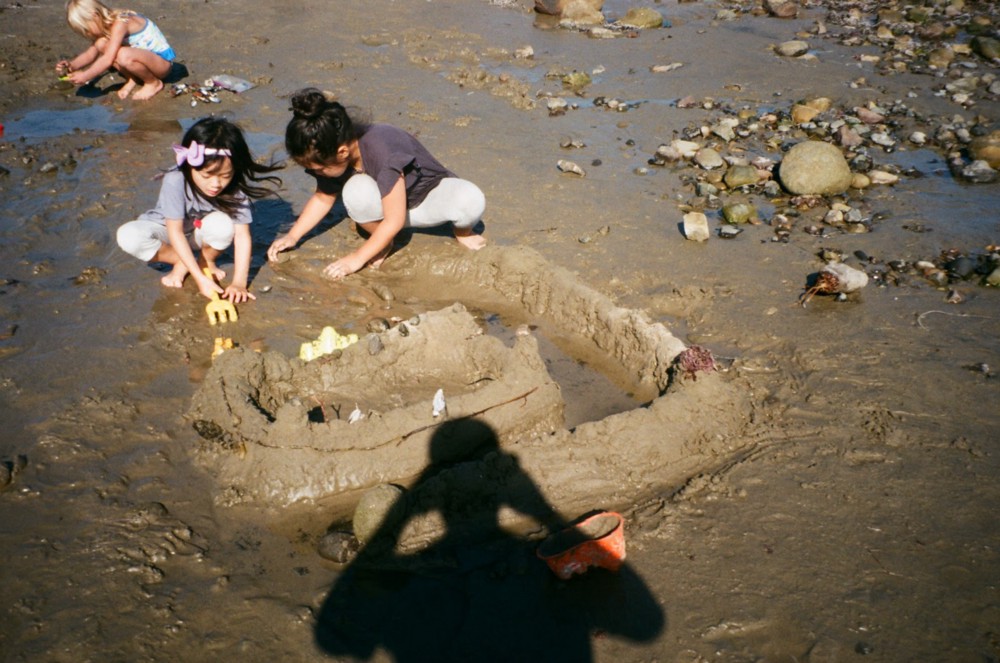
Wooyong’s silhouette appears in the image as he takes a shot of his daughters playing on the beach. Using film cameras for the first part of the project kept parents from self-editing and introduced an element of surprise when the prints came back. (Courtesy of Wooyong Choi)
Choosing cameras and training parents to use them
It’s become super easy to take photos on mobile phones — but that often also means more self-editing. The ability to take photos and delete them makes it easier for people to shoot and reshoot a single moment to get the perfect take.
After KPCC/LAist visual journalist Chava Sanchez researched camera and equipment options, we decided to go with simple film cameras over digital cameras to give the experience of shooting photos a more spontaneous and nostalgic feel. When shooting on film, you have to wait to get back the developed prints to know how a photo turned out. The longer process takes out some of the self-editing and perfecting of the moment.
We thought initially that we would use disposable cameras, but since we wanted to give parents more than one roll of film, simple point-and-shoot film cameras turned out to be more cost-effective. Getting to keep the photos turned out to be an added bonus for the parents. During the project, several said they planned to frame a few of the pictures as keepsakes.
The parameters we came up with: Each parent would get two rolls of 24-exposure film. We would give them their prints from the first roll to see how they turned out so that they could adjust to shoot their second roll based on anything they might have missed.
At the orientation meeting, Chava led a training on the point-and-shoot cameras. His goal was to demystify the process and give parents confidence to feel that they could pick up the camera and shoot. He shared images of everyday life that he shot with a point-and-shoot camera around his own neighborhood along with composition tips to keep in mind while shooting. He also shared a short video of a photographer who shoots photos rapid-fire, without self-editing or hesitation.
We then led parents in an exercise for each person to begin to focus on the story that they wanted to tell about their life as a parent. Parents storyboarded ideas about what they would shoot to tell their stories. Our guiding prompt: Show us: What is important for Southern California to know about your experience as a parent?
And with that, the parents were off to shoot.

Left: Parents wrote comments on post-its about what struck them about the photos. Many parents talked about how much they saw their own lives others’ photos. (Sarah Pineda/KPCC) Right: Parent Wooyong Choi holds up his photos. (Stefanie Ritoper/KPCC)
Bringing parent experiences into the newsroom
After shooting photos, parents convened again to talk about them. We designed these meetings to surface themes that would help us curate photos for the project. We printed photos at the small San Gabriel business Fromex and posted them on the walls.
As parents looked around the room, many were surprised at how much of their own lives they saw in others’ photos.
“I’m so glad that I’m not the only one whose house is messy,” one parent said, laughing. And an audible wave of agreement went through the group.
“You are definitely not the only one!” another parent added.
The “beautiful chaos” of parenting emerged: the challenges, the mistakes, also the joy. This became a guiding theme. We saw that what we were creating was an antidote to the shiny, perfect image of parenting that blogs and social media often portray.
We also wanted parents’ voices to inform our early childhood reporting and programming. We invited editors and other newsroom staff to the two debrief meetings. Lynne Gross, who at the time was a producer for KPCC In Person events, attended the first meeting and Mariana Dale, early childhood reporter, participated in the second meeting to listen to parents’ stories.
From a reporting perspective, Mariana said that it was refreshing to be a “fly on the wall” and hear parents discuss issues that were important to them in an open-ended way. Lynne also came away feeling encouraged by discussions and feeling like she related to the common experiences that parents shared about potty training or kids crying at drop-off.
Mariana and I then turned to the elements we would need for broadcast and a gallery “audio tour.” We met individually with each parent for an audio interview to have each parent talk about the photos in their rolls. Though initially we planned to pull snippets of parents’ life stories from these interviews, as the project changed course, these audio interviews became an important foundation for parents’ descriptions of their photos in their own words.
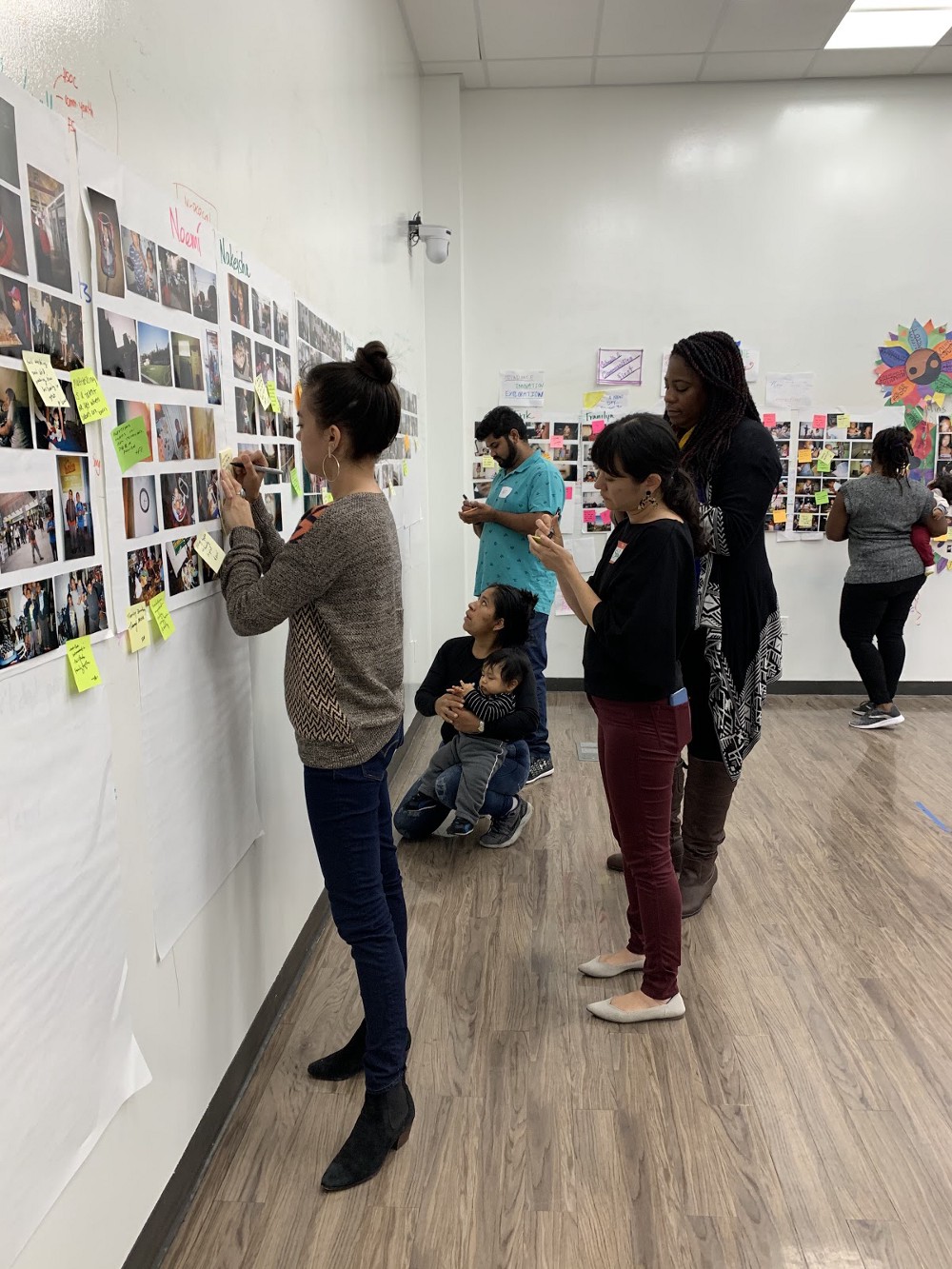
Early childhood reporter Mariana Dale said it was refreshing to be a “fly on the wall” and hear parents discuss issues that were important to them in an open-ended way. Left to right: Mariana Dale, Noemí Cruz, Mehboob “Ali” Abdullah, Stefanie Ritoper, Nakeisha Robinson, Nikidda Thomas-Carrillo. (Sarah Pineda/KPCC)
And then the pandemic began … a change of plans
We were all set to create a physical photo gallery exhibition in partnership with Armory Center for the Arts in Pasadena and had an event planned at the Hyde Park branch of the Los Angeles Public Library …
And then, of course, the pandemic happened.
These in-person events were no longer possible, at least for the moment. We had to shift to adapt.
We had already established strong relationships with parents over the months, and it felt natural to reach out to them to see if they would continue to take photos as their lives changed. Incredibly, all of them agreed.
We wanted to know: What is it like to parent in times of great change?
The medium changed. Instead of using film cameras, parents used their phones because they were readily accessible and didn’t require the extra step of developing film during the quarantine.
We created a Facebook group for people to share their photos, and the photos that came in showed the struggles and joys of parenting in the moment. Parents shared photos of Zoom chats, kids with masks, and lines outside of supermarkets. They also shared photos of “camping” indoors, sidewalk chalk creations and water gun fights. One parent shared bloopers from TikTok videos she made with her daughter.
We also began to see parents commenting on each other’s photos, asking questions, and offering ideas for kids’ activities. As an unintentional side effect, our small cohort of parents started to get to know each other better.
To gather audio for the digital gallery, we held two conversations with parents on Zoom and recorded them talking about their experiences in the current moment and how their lives had changed.

During quarantine, parent Richard Avila Winburn captured his kids cooling off in buckets of water in their backyard in the valley. (Courtesy of Richard Avila Winburn)
Centering parents’ voices in the digital gallery
As Jenny Lin, Chava Sanchez, Mariana Dale, and I began to curate the digital gallery, we realized that the process was different than curating an in-person one. While an in-person gallery naturally would allow the images to speak for themselves, the digital format needed more explanation to keep users’ attention. Also, the parents’ backstories were what brought life and meaning to the photos they shot.
After some iteration, we decided to use parents’ own words to caption each photo and let each parent’s gallery tell their story through the course of their photos.
Though initially Jenny Lin joined the project to curate and build out the in-person gallery, the shift to digital serendipitously let us tap into her UX design skills. She got to work designing the interface, collaborating closely with data editor Dana Amihere. Dana then took charge of translating the gallery design to code and building out the site.
As we navigated through early prototypes of parents’ galleries, things clicked. Each gallery was a little window into each parent’s life, and they were the ones telling their own stories. The format felt true to the spirit of the project.
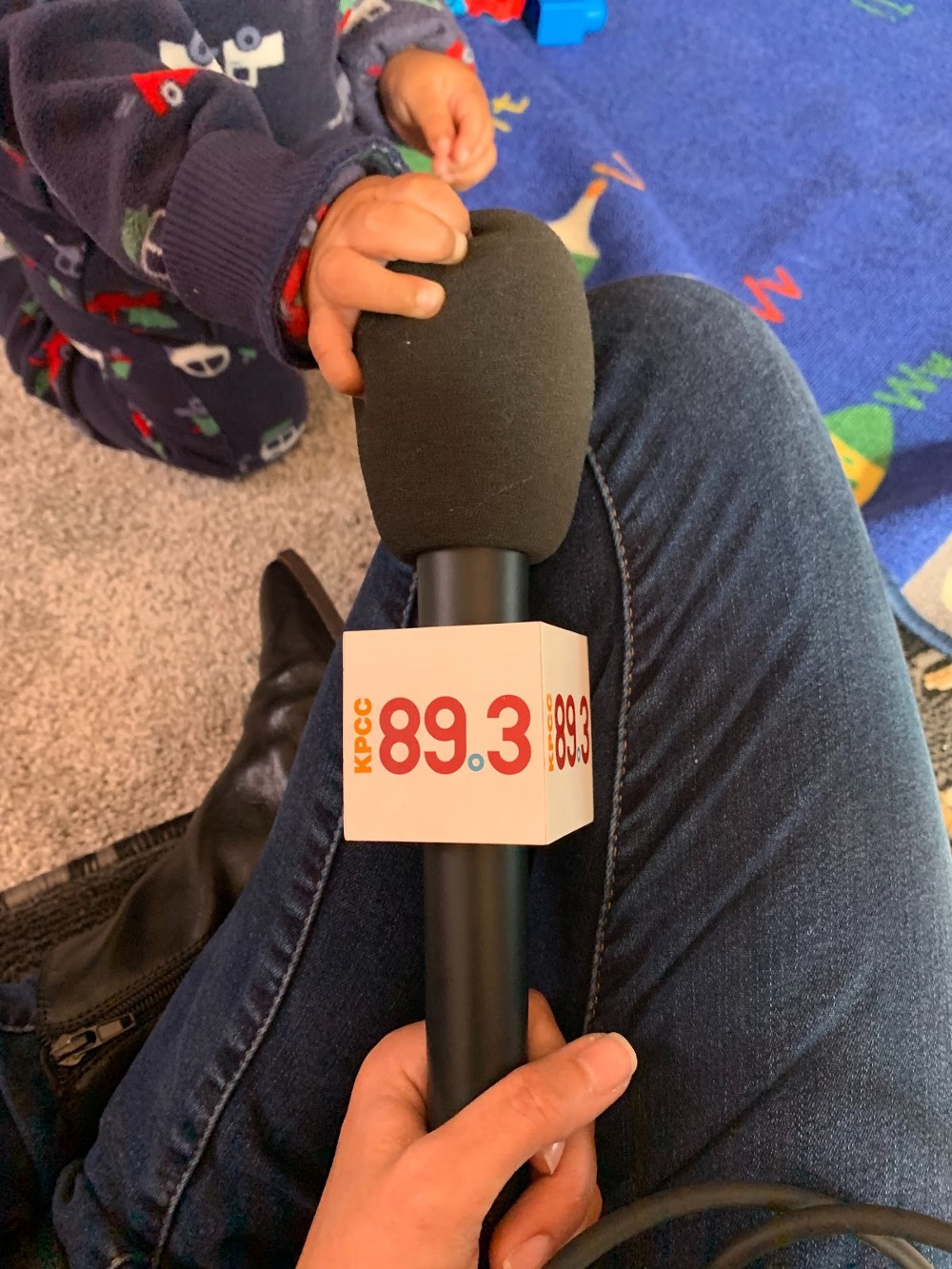
For early childhood reporter Mariana Dale, the project was an orientation to both Los Angeles and the world of early childhood. (Mariana Dale/KPCC)
What was the impact? And what did we learn?
Overall, the project taught our team a lot about how engagement and reporting can go hand in hand.
As the project developed, we found that parents in the group became an informal advisory group for the early childhood beat. For Mariana, the start of the project coincided with her onboarding to KPCC/LAist. Going into parents’ homes and interviewing them became a kind of orientation to both Los Angeles and the world of early childhood. And, as the world began to experience dramatic changes, we frequently consulted with parents to get their take on relevant issues. In fact, Mariana featured Shammeer Dawson, one of the photo project parents, in a story about how parenting was changing during coronavirus.
As education editor Tony Marcano pointed out in a recent conversation, it’s not always immediately clear how a journalist can integrate engagement into their reporting. This project is an example of one model: Engagement drove the reporting, and the result was a high-quality end product.
Parents also told us that they took away a lot from the experience. Though sometimes making the time to pick up the camera was hard or they sometimes had to deal with technical issues with the cameras, they enjoyed seeing the result. Most of all they enjoyed hearing from each other and feeling like they weren’t alone.
Richard Avila Winburn, one of the project parents, said he enjoyed hearing the stories behind the photos, especially all the struggles and ridiculous challenges that other parents faced. “I think it made me feel a little bit less anxious about parenting, hearing other parents going through the exact same thing,” he said. “That’s been probably the most rewarding thing I’ve received from this (project), is that feeling of we’re all in this together.”
“Families across the country are really just trying to do the best that they can,” parent Nakeisha Robinson told us. “They are really vested in their family, their kids and really wanting to give them the best they can.”
Though some of the project participants knew and listened to KPCC, most of the group did not consume KPCC/LAist reporting previous to the project. Though we haven’t polled the group, we see informally that now members from our group repost our articles online with their networks.
From it all, we took away a lot of lessons for future projects, from the macro to the nitty-gritty. Some of the biggest top-line lessons we learned are:
- Long-term relationships pay off. Setting up projects for open-ended collaboration with community members allows us to develop deep ties in different parts of the city that deepen our reporting. Having preexisting relationships with this group allowed us a window into parenting during quarantine in a way that we would not have had otherwise.
- Break down barriers to participation. It’s not enough to plan a meeting or set up an online form to bring more diverse voices into a project. To hear from people who we are not currently reaching, we have to actively collaborate with organizations and entities that already have trusted relationships. To keep people engaged and comfortable with participating, media outlets have to be ready to provide support like child care, translation, food, regular texting, and technical support. It takes time, but it’s worth it!
- Reporting that centers community members’ own voices can be powerful. The quality of the final product is reflective of the deliberate, thoughtful process it took to get there. Having community members share their stories in their own voices also allows for a fresh and complex look at an issue that needs new framing.
- Be ready to pivot and share work more regularly. When we started the project, we thought we were creating evergreen content — we did not know a pandemic would happen! In retrospect, it would have been great to build in more frequent ways to share back parents’ voices in regular coverage.
And a second year of the photo project has already started. The next round will focus on caregivers and educators. I am excited to see what this next group of participants teaches us.
Stefanie Ritoper is an engagement producer for KPCC’s early childhood education coverage. This piece originally published on Medium. It has been republished with permission.

